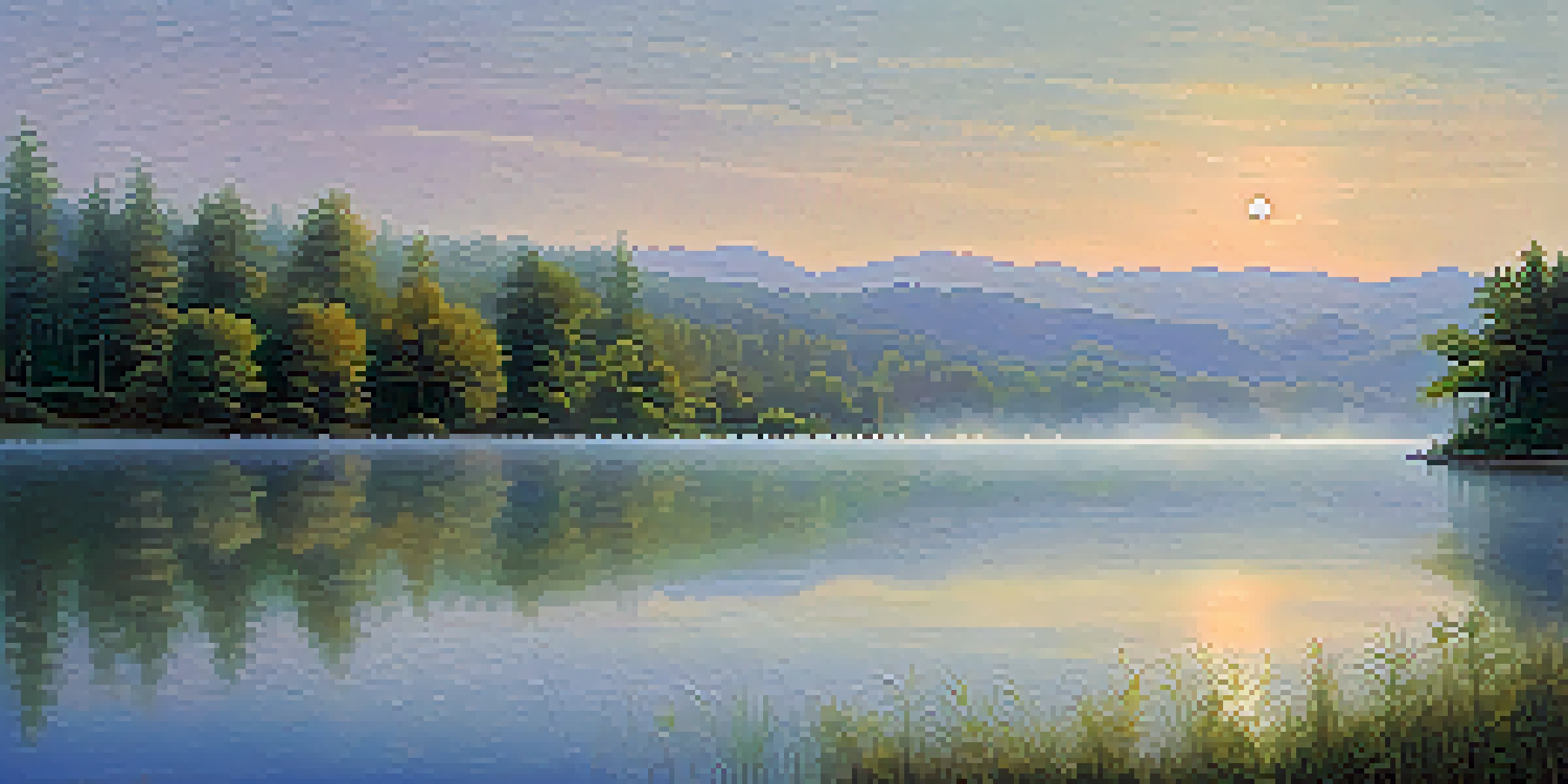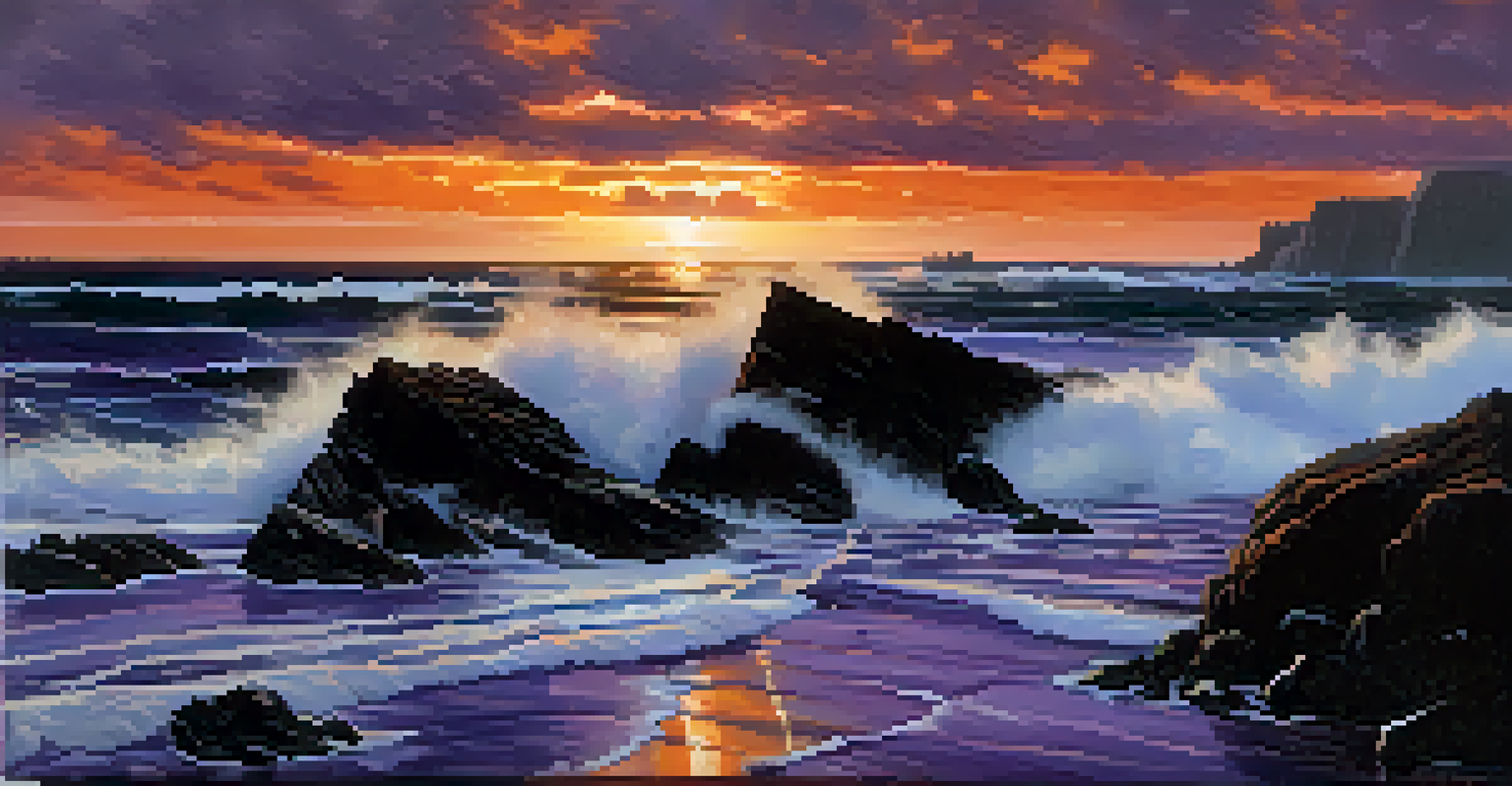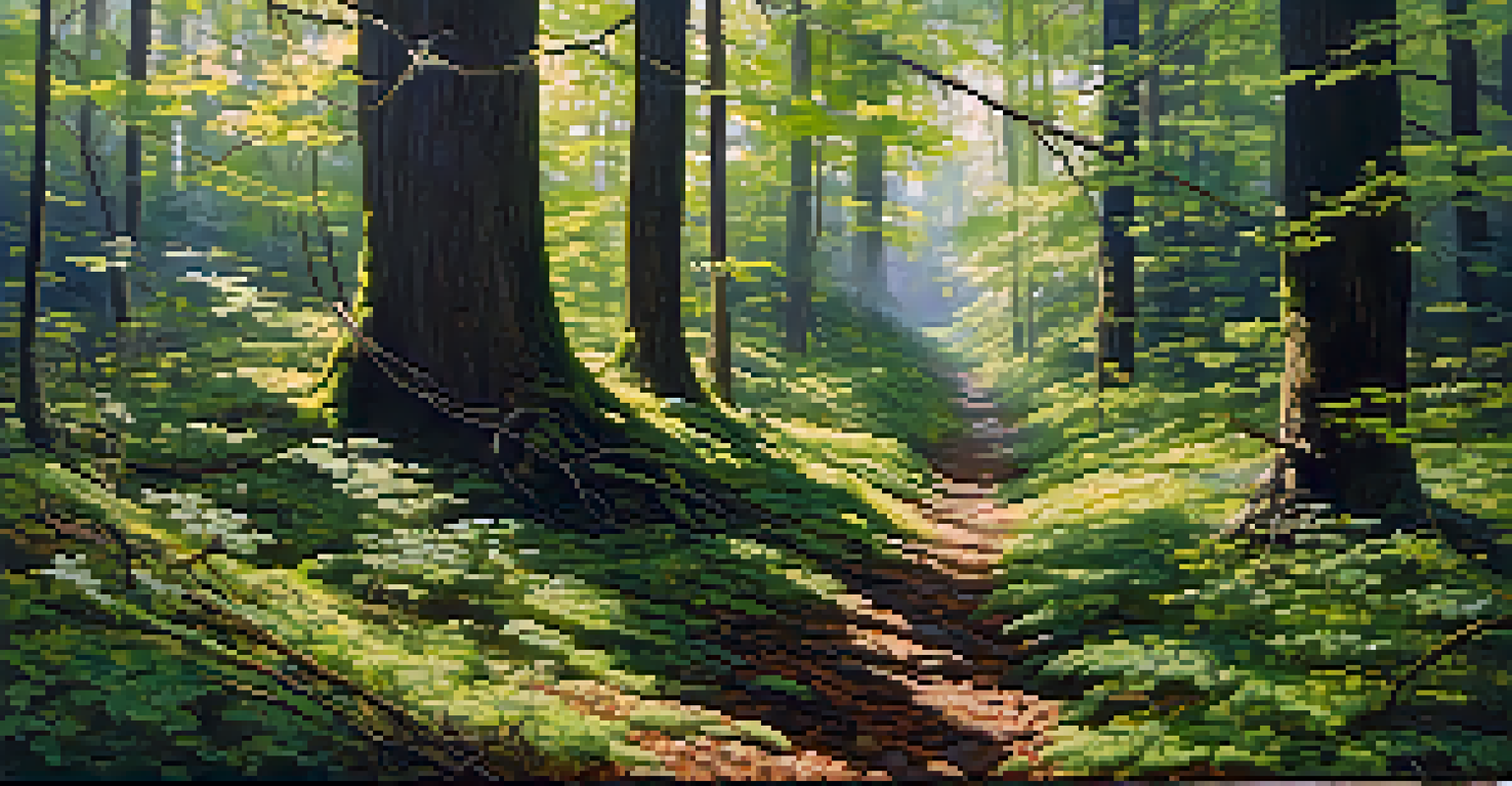The Use of Light and Shadow in Landscape Painting

Understanding Light: The Artist's Key Tool
Light is one of the most crucial elements in landscape painting. It helps set the mood, time of day, and even the season depicted in the artwork. By manipulating light, artists can create vibrancy or softness, guiding the viewer’s emotional response.
Light is the magical ingredient that transforms a blank canvas into a masterpiece.
Consider how the golden hour, just before sunset, bathes landscapes in a warm glow. This specific quality of light can evoke feelings of nostalgia or tranquility, drawing the viewer into the scene. Artists often strive to capture this fleeting moment, making their work resonate on a deeper level.
Moreover, the direction of light affects how elements in the landscape are perceived. Front lighting can flatten a scene, while backlighting creates silhouettes. Understanding these nuances allows artists to convey depth and dimension in their paintings.
The Role of Shadow in Creating Depth
Shadows play an equally important role in landscape painting. They provide contrast and help define shapes, adding a three-dimensional quality to the artwork. Without shadows, landscapes can appear flat and lifeless, lacking the dynamism that captivates viewers.

Imagine a mountain range at dusk; the shadows cast by the peaks can create a stunning visual narrative. These dark areas not only ground the composition but also guide the viewer’s eye throughout the painting. Artists often use shadows strategically to enhance focal points.
Light Sets the Mood in Art
Manipulating light allows artists to evoke emotions and create a sense of time and atmosphere in their landscape paintings.
Furthermore, shadows can evoke emotions, much like light. A shadowy grove may suggest mystery or solitude, while bright, sunlit fields may convey joy and openness. This interplay between light and shadow enriches the storytelling aspect of landscape art.
Techniques for Capturing Light and Shadow
Artists use various techniques to effectively represent light and shadow in their landscapes. One common approach is the use of gradation, where colors transition smoothly from light to dark. This technique can make a painted sky appear more realistic and atmospheric.
Every painting is a journey into light and shadow, where emotions dance across the canvas.
Another method is chiaroscuro, an Italian term that means 'light-dark.' This technique involves using bold contrasts between light and shadow to create a dramatic effect. By applying chiaroscuro, artists can highlight focal points, making certain areas of the painting pop.
Additionally, glazing is a technique where thin layers of transparent paint are applied over dried layers. This allows artists to build up luminosity and create a sense of depth, as light appears to emanate from within the painting itself. Experimenting with these techniques can lead to stunning results.
Natural Landscapes: Inspiration for Artists
The beauty of natural landscapes provides endless inspiration for artists seeking to explore light and shadow. From lush forests to rugged coastlines, each scene offers unique lighting conditions that challenge and excite creative minds. Artists often venture outdoors, sketching or painting en plein air to capture these moments firsthand.
For example, a forest at noon will present a different play of light and shadow compared to a sunset over the ocean. Each setting has its own characteristics, with varying colors, textures, and atmospheres. This diversity allows artists to experiment and refine their techniques.
Shadows Add Depth and Emotion
Shadows are essential for providing contrast and dimensionality, enriching the narrative and emotional impact of the artwork.
Moreover, studying the works of masters can further inspire artists. The way famous painters like Claude Monet or J.M.W. Turner used light and shadow can provide valuable lessons. Observing their techniques can spark new ideas and help artists find their unique voice.
The Emotional Impact of Light and Shadow
The interplay of light and shadow in landscape painting goes beyond aesthetics; it can evoke powerful emotions. Bright, sunlit scenes can convey warmth and happiness, while darker, shadowy areas might elicit feelings of melancholy or introspection. This emotional depth enriches the viewer’s experience.
For instance, a painting depicting a serene lake at dawn bathed in soft light can inspire feelings of peace and calm. In contrast, a stormy landscape with dark clouds and jagged shadows might provoke feelings of tension or awe. Understanding these emotional cues can help artists create more impactful work.
By consciously choosing how to depict light and shadow, artists can create a dialogue with their audience. The emotions stirred by an artwork can lead to personal interpretations and connections, making the piece resonate on a deeper level.
Experimentation: Finding Your Unique Style
As artists delve into the use of light and shadow, experimentation becomes key to discovering their unique style. Trying different techniques, such as varying brush strokes or color palettes, can lead to unexpected and exciting results. This process encourages growth and creativity.
For example, an artist might start with traditional methods but then blend in contemporary approaches, such as digital tools. This fusion can create a distinctive voice that sets their work apart from others. Embracing experimentation allows artists to push boundaries and redefine landscape painting.
Experimentation Fuels Unique Styles
Artists can discover their unique voice by experimenting with various techniques and approaches to light and shadow in their work.
Moreover, sharing work with fellow artists or art communities can provide fresh perspectives. Feedback and collaboration can spark new ideas and encourage artists to explore uncharted territories in their art. Ultimately, the journey of discovery is what makes landscape painting so fulfilling.
Conclusion: The Lasting Influence of Light and Shadow
The use of light and shadow in landscape painting is a powerful tool that shapes not just the artwork, but the viewer's experience as well. By mastering these elements, artists can create dynamic compositions that invite exploration and emotional engagement. This influence has been evident throughout art history and continues to resonate today.
As artists develop their skills in manipulating light and shadow, they contribute to the ongoing dialogue within the art community. Each piece becomes a reflection of their unique perspective and understanding of the world around them. This connection between artist and audience is what makes landscape painting so timeless.

In essence, the interplay of light and shadow is not just a technical aspect of painting; it’s a means of storytelling. Every brushstroke carries the potential to evoke emotions and inspire connections, ensuring that the beauty of landscapes will endure for generations to come.